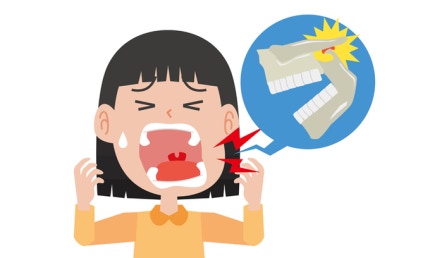저도 턱관절이 있어서 예전에 병원에 꾸준히 다녔던 기억이 있는데요 쉽게 낫지 않더라구요 ㅠㅠ 정보감사합니다
When opening your mouth, it makes a 'snap' sound... Is it due to eating tough foods? Stress? Or malocclusion?
Temporomandibular joint disorder is one of the diseases that commonly occur around us.
Temporomandibular joint disorder refers to a condition where inflammation occurs in the tissues surrounding the jaw joint or the joint itself becomes dislocated, leading to pain and functional abnormalities. Initially, it begins with slight pain when opening the mouth, but as it worsens, severe pain is experienced when opening the mouth or eating hard foods. The pain manifests in the jaw, ears, head, or face areas. Over time, the alignment of the teeth may become misaligned, and facial asymmetry may develop. This can result in an ongoing inability to fully open the mouth, and a grinding noise may be heard when moving the jaw.
 |
If you have temporomandibular joint disorder, you may have difficulty opening your mouth wide, experience sounds or pain, and face problems with eating and speaking, significantly reducing your quality of life. Recent domestic research shows that among 17,800 adults aged 19 to 80, about 12% reported experiencing at least one symptom of temporomandibular joint disorder.
The temporomandibular joint is the joint disc between the lower jawbone and the skull, surrounded by muscles and ligaments. Repetitive abnormal habits such as clenching, grinding teeth, or biting lips are among the most common causes. These habits negatively affect the temporomandibular joint, leading to disorders.
According to Professor Park Hye-ji of the Department of Oral Medicine at Gangdong Kyunghee University Dental Hospital's study on "Comorbidities in Adult Temporomandibular Disorder Patients According to Age and Gender," the prevalence of temporomandibular disorder was higher in individuals with tinnitus, headaches, depression, ischemic heart disease, or cold extremities. In fact, temporomandibular disorder patients frequently complain of headaches, tinnitus, and neuralgia.
In addition, various causes such as excessive stress, malocclusion, and trauma are involved.
Since temporomandibular joint disorder has various causes, choosing the appropriate treatment method is important.
Initially, correcting bad habits such as eating hard or chewy foods, chewing on only one side of the mouth, and biting tightly can be effective. If pain and symptoms persist afterward, non-surgical treatments can be performed alongside lifestyle corrections. These include occlusal stabilization device therapy, physical therapy, Botox treatment, as well as exercise therapy and medication therapy.
Professor Park Hye-ji stated, "Temporomandibular joint disorder (TMD) can typically be healed within 1 to 2 years of treatment in over 90% of cases, with pain and function restored." She warned, "However, if symptoms are left untreated without proper care, the condition can become very complicated, and recovery may be slow, leading to longer treatment periods. It can progress to degenerative joint disease of the TMJ, causing structural changes in the bone, which may result in serious issues such as malocclusion and facial asymmetry. When pain becomes chronic, some patients may even experience anxiety and depression."